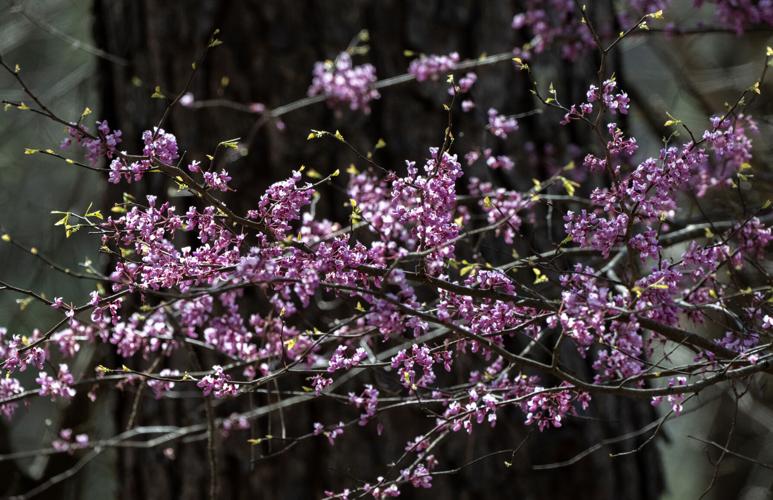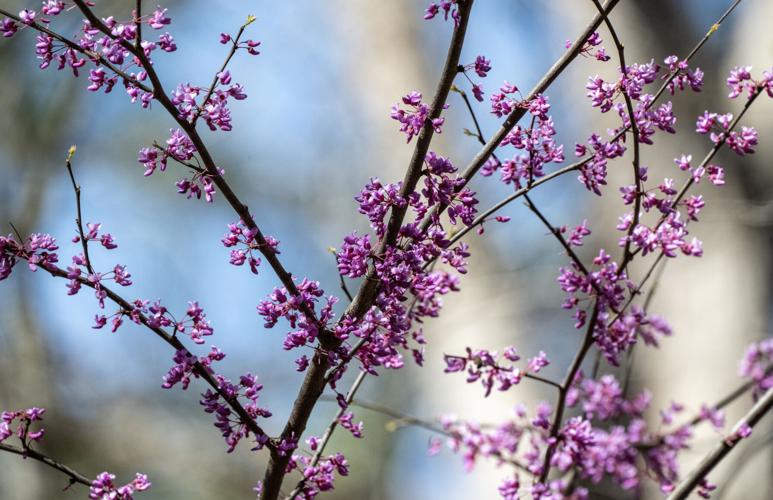One of the first − and most strikingly beautiful − trees to bloom each spring in the Lake Martin area is the Eastern Redbud, or Judas tree.
Redbuds are rather small, native, understory trees with hardwood and irregularly shaped branches that produce distinctive purplish blossoms.
Ironically, neither of this tree’s most common names are accurately descriptive. Its blooms are not red, and it’s not native to present-day Israel, which is where Judas Iscariot lived.
According to legend, after Judas betrayed Jesus, he hanged himself from a tree that had lots of tiny white flowers. As the story goes, the tree was so ashamed to be involved with Judas that it blushed, forever tinting its blossoms.
There are a number of trees found around the world in this family. The Eastern Redbud native to North America is known to botanists as Cercis canadensis, while its cousin found in southern Europe and western Asia − including Israel − is Cercis siliquastrum. However, when America was settled by Europeans, the Judas tree story proved too memorable to abandon, and our Eastern Redbud is sometimes known as the Judas tree today.
Eastern Redbud blossoms are usually purple, purplish-pink or sometimes even white − leaning into magenta shades much more than reds. This tree puts out clusters of tiny flowers on bare limbs even before it produces leaves each March. Because at that time of year very few deciduous trees have any leaves at all, Eastern Redbuds stand out from the surrounding gray and brown forest so well that they can be easily identified from a vehicle traveling at highway speeds.
Redbud flowers look a lot like pea flowers for good reason: Eastern Redbuds are specialized members of the legume family. The tiny flowers have five petals − a banner petal, two wing petals and two keel petals.
These trees usually have short trunks − sometimes multiple trunks − and rarely exceed 30 feet tall, though some individuals have grown to 50 feet tall.
Eastern Redbuds begin to leaf out while their blossoms are intact. Leaves are smooth, dull green and heart-shaped with a pointed tip. During fall, they turn yellow and brown before falling.
This tree produces large, flat, bean-like fruit pods up to 4 inches long that each contain up to 10 reddish-brown bean-like seeds. The pods open as they dry, either on the tree or after they have fallen to the ground, to disperse the seeds.
Eastern Redbuds are native to the eastern and central U.S., from northern Florida to southern Pennsylvania and west from southern Nebraska to Texas. They also grow in northeastern Mexico.
It can handle a wide range of climates and soil types but prefers well-drained soils that are not too acidic and strong sunlight. It’s often found growing in the same place as dogwoods, which also bloom in early spring. Good places to look for Eastern Redbuds are open woodlands, along the edge of the forest and alongside streams or water sources.
Redbud flowers are edible, with a sour taste that can be used to make tea or jelly. They can also be added to spring rolls and breads.
According to the Realtree website, the blossoms are high in Vitamin C. To make tea, Realtree says to gather 2 cups of Redbud flowers and chop them. Add the flowers to 2 quarts of cold water and bring to a heavy simmer in a pot; then, remove the pot from heat and cover. Steep the blossoms for 15 minutes. Add the juice of one lemon, and the tea will turn a light purple color. Sweeten with honey or sugar and serve up the Redbud tea for a first taste of spring.
Boiling Eastern Redbud twigs can also produce a light yellow dye.
Some information for this article came from Wildflower.org, the Missouri Botanical Garden, the Arnold Arboretum of Harvard University, the U.S. Department of Agriculture and Realtree.com.










